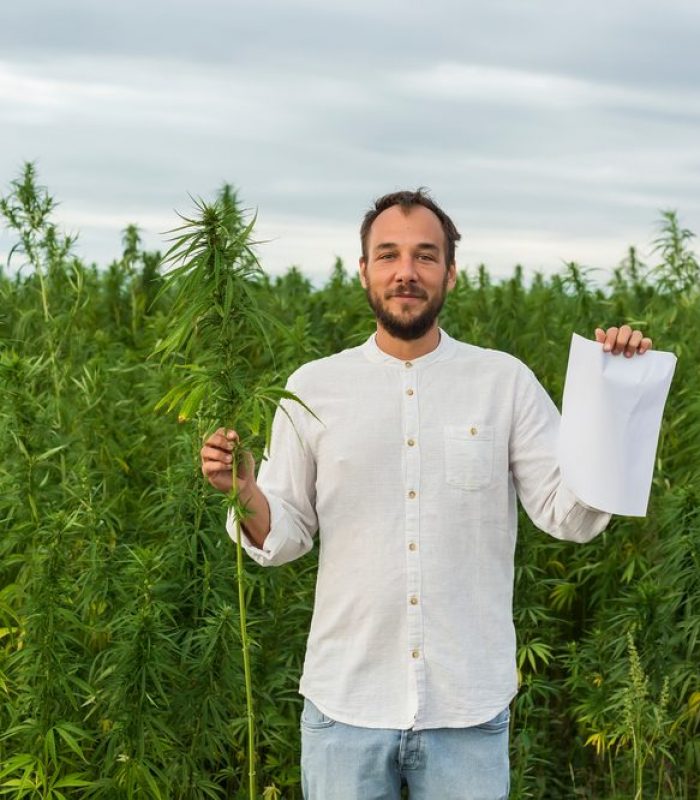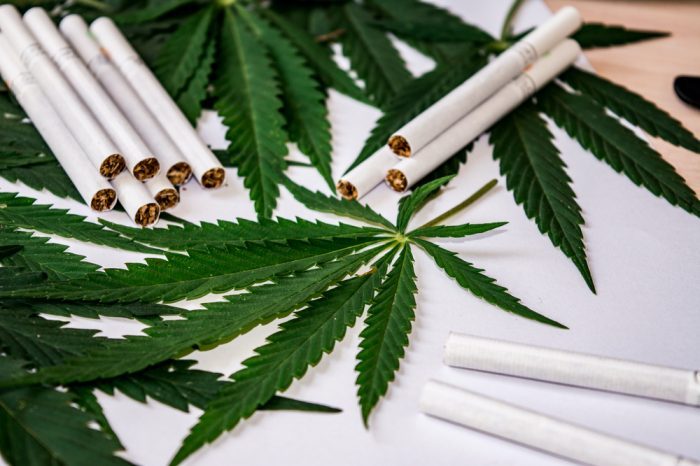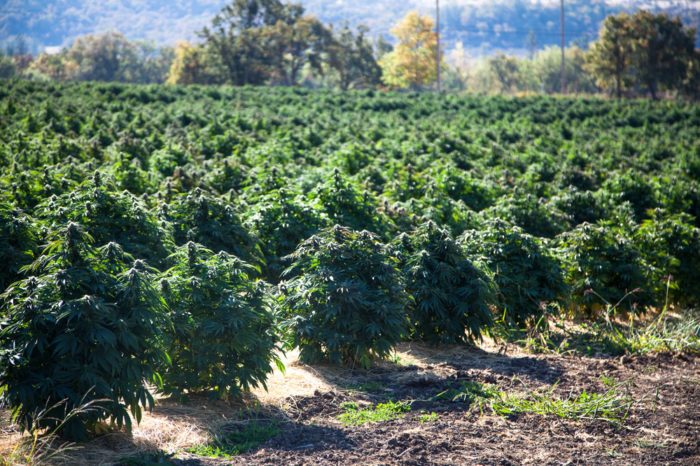Industrial hemp and weed don’t actually mix — and pollen drift is a real threat to the cannabis industry.
In California’s Humboldt County, nearby industrial hemp plantations threaten the integrity and yields of many cannabis grows. But just how valid are the concerns, and how can these miracle crops coexist in a country that so badly needs them?
Humboldt County — The Epicenter of Cannabis Cultivation
Humboldt County is home to the remnants of a counterculture. A lot has changed in the intervening half-century since Humboldt became an epicenter for cannabis production. In 1996, medicinal cannabis became legal. Twenty years later, recreational consumption gained approval.
Suddenly those who were hiding from authorities for decades had to adapt to new ways. Rather than sever every piece of evidence that linked them to cannabis production, growers found themselves having to provide accounting records. Letting the world know, through clever marketing of the now-legal green gold, they had been cultivating under the radar for decades.
More recently however, things got even more complicated. The Farm Bill, which passed in 2018, made hemp a regulated crop. It’s an important step toward federal legalization of cannabis and has clear economic benefits. However, it may end up creating more problems than it solves for cannabis growers in Humboldt County.
Cross-Pollination with Industrial Hemp
With the rapid increase of hemp plantation numbers, cannabis farmers in Humboldt County are voicing valid concerns around hemp. Their fears around industrial hemp are not related to the well-understood benefits that the plant offers, but rather the fact that ill-placed hemp plantations can lead to cross-pollination.
Fifty years of cultivating in the region have led to the creation of some unique strains. Famous for chemovars such as Banana Split, Blackberry Fire, Purple Pantry Dropper, and Sour Deisel, farmers in Humboldt County want to ensure that these strains have protection from the pollen drift of male hemp plants.

Is Cross-Pollination a Legitimate Concern?
The threat from hemp is very real for cannabis farmers. Cannabis is a dioecious plant, meaning that it has distinct male and female varieties. Those who cultivate the cannabis plant for medicinal and recreational markets are most interested in female plants. Because females produce the potent buds with medicinal properties. By growing hemp in close proximity to existing farms in Humboldt County, it means that the male varieties used for fiber and seed can easily pollinate female cannabis plants.
Once pollinated, female cannabis plants direct the available resources into seed production as opposed to growing buds. Seeded buds produce less flower and hence growers must accept lower yields — something that ultimately affects the bottom line of any grow operation.
The Authorities are Playing Catch up
The recent boom in both hemp and legalized cannabis has put many policymakers on the back foot. Simply put, it’s unchartered territory, and many laws are purely reactive. With two separate departments overseeing the production and regulation of each crop, this disconnect is a cause for real concern.
To help ease the potential for cross-pollination, certain U.S. states have introduced legislation. In Colorado, Pueblo County enforced a four-mile isolation area between industrial hemp and cannabis grows. This was done in response to claims from many farmers who reported a reduction in yields in the area due to cross-pollination. Oregon and Washington enforced a similar boundary, but sadly the enforcement did not work. The authorities soon found that hemp pollen can travel a lot further than four miles.
How to Prevent Cross-Pollination in Industrial Hemp:
Thankfully, there are several ways to prevent cross pollination.
Legislate for a Buffer Zone
Although several states have enforced such a restriction, hemp pollen can travel far and wide on a steady breeze. Distances of three to fifteen miles are typical, while distances of up to thirty miles are not uncommon. In addition to the vast distances it can travel, the sheer quantity of hemp pollen found in the air is also a cause for concern. A study published in the Annals of Allergy (2000) found that hemp pollen represented thirty six percent of the air pollen in Nebraska in mid-August of that year. Such levels of pollen are a real cause for concern for cannabis farmers.
“Roguing”
The process of roguing involves removing all male plants from a grow once identified. Particular care must also be taken with hermaphroditic plants. These are plants that have both the male pollen-producing parts, and the carpellate female ovule-producing parts.
Wider Organization and Effective Communication
Farmers with grow operations for hemp and cannabis plants located in close proximity can avoid many of the potential problems with effective communication. It becomes a question of developing a planting schedule. By only planting female cannabis plants after the highest rates of pollen in the air have passed, it removes the need for a buffer zone. This allows farmers involved in both operations to coexist.

The Economic Consequences For Humbolt County
It’s hard to see how activities in Humboldt County can continue to thrive without some form of compromise. Industrial hemp isn’t going away, and nor should it. The benefits of the plant are clear, as is the economic opportunity it provides to a large number of people
It may well be the case that the farmers in Humboldt County will survive by standing apart. Perhaps by branding themselves differently, marketing a high-end product that’s the result of half a century of embodied wisdom reaching back to those novice growers in the 1960s. After all, it was they who discovered how light deprivation could bring about premature flowering. And how the selective breeding of those Mexican and South Asian landraces led to some of the world’s most desirable cannabis.
With such growing expertise, it would be a tragic loss to the cannabis community if Humboldt County product was compromised in some way. Sadly, many registered cannabis growers there are already facing financial difficulty due to falling prices and regulatory requirements. Not to mention the transition into a legal market that has been far from plain sailing.
And when it comes to the threat from industrial hemp, ultimately, and like many things in life, it’s going to be a case of a compromised coexistence.





